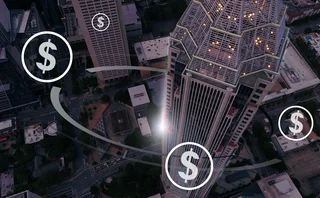
Crunch time for climate-related risk exposure

As governments worldwide focus on the coronavirus (Covid‑19) pandemic amid plummeting demand for fossil fuels, it may seem climate change has dropped down the global agenda.
The long-term impact of Covid‑19 on green investment and climate movement is unclear, but it is widely thought that low oil prices and economic recession will slow the transition to the low-carbon economy.
However, now is not the time to drop the ball on assessing and addressing climate risk. Once social distancing measures are lifted and the world’s thirst for oil resumes, harmful emissions will ramp up again – possibly at even greater levels than before due to the lower cost of fossil fuels. Oil prices could remain in the doldrums for some time, even with higher demand, due to the huge inventories that have built up.
At the same time, severe weather events will continue wreaking havoc more frequently, putting the spotlight once again on climate change and bringing renewed pressure to create a low-carbon economy.
And, still reeling from the economic crisis caused by Covid-19, regulators and central banks will be at pains to avoid another systemic financial meltdown due to the transition to a low-carbon world. The onus will once again be on individual firms to assess and mitigate their own risk exposures.
It’s no easy feat. But firms that don’t assess the climate risk in their portfolios, or hedge or divest their exposures accordingly, could see some of their assets lose significant value over time. In the meantime, they may fall foul of increasingly stricter regulation.
In April 2019, for example, the Bank of England (BoE) released its supervisory statement for banks and insurers outlining the financial risks from climate change and the strategic approach needed to manage these risks. The guidance has forced institutions to consider their initial plans for putting frameworks in place, as well as nominating senior individuals who will be ‘climate-responsible’.
Later, in December last year, the BoE submitted proposals for climate change stress tests, which would require banks and insurers to test the resilience of their portfolios against more frequent severe weather events and transition risk. An article in this report, Show don’t tell – BoE’s climate stress test dilemma, discusses the industry’s opinions of the proposed stress tests.
The report then turns to the topic of physical climate risk in Why forecasting climate change is a disaster. This looks at how challenging it is to assess physical climate risk given widely differing long-term forecasts.
We then take a look at the risks that the low-carbon economy poses to certain sectors of industry, in particular fossil fuel producers that could find themselves with stranded assets. In Calls to hike climate policy raise risk for oil firms, we ask how and when the transition will curb demand for fossil fuels and how firms are estimating and measuring their exposure to this risk.
The report concludes with two interviews addressing different aspects of climate change. In a Q&A, Commissioner Rostin Benham of the US Commodity Futures Trading Commission talks about ways of tackling market risk caused by climate change. He calls for new derivatives products and other products for risk transfer to be made available to help firms manage their individual exposures to climate risk.
Only users who have a paid subscription or are part of a corporate subscription are able to print or copy content.
To access these options, along with all other subscription benefits, please contact info@risk.net or view our subscription options here: http://subscriptions.risk.net/subscribe
You are currently unable to print this content. Please contact info@risk.net to find out more.
You are currently unable to copy this content. Please contact info@risk.net to find out more.
Copyright Infopro Digital Limited. All rights reserved.
As outlined in our terms and conditions, https://www.infopro-digital.com/terms-and-conditions/subscriptions/ (point 2.4), printing is limited to a single copy.
If you would like to purchase additional rights please email info@risk.net
Copyright Infopro Digital Limited. All rights reserved.
You may share this content using our article tools. As outlined in our terms and conditions, https://www.infopro-digital.com/terms-and-conditions/subscriptions/ (clause 2.4), an Authorised User may only make one copy of the materials for their own personal use. You must also comply with the restrictions in clause 2.5.
If you would like to purchase additional rights please email info@risk.net
More on Risk management
BofA sets its sights on US synthetic risk transfer market
New trading initiative has already notched at least three transactions
Op risk data: At Trafigura, a $1 billion miss in Mongolia
Also: Insurance cartels, Santander settlement and TSB’s “woeful” customer treatment. Data by ORX News
Cyber risk can be modelled like credit risk, says Richmond Fed
US supervisors may begin to use historical datasets to assess risk at banks and system-wide
The changing shape of risk
S&P Global Market Intelligence’s head of credit and risk solutions reveals how firms are adjusting their strategies and capabilities to embrace a more holistic view of risk
To liquidity and beyond: new funding strategies for UK pensions and insurance
Prompted by policy shifts and macro events, pension funds and insurance firms are seeking alternative solutions around funding and liquidity
More cleared repo sponsors join Eurex ahead of cross-margining
End of TLTROs for banks and pension fund search for liquidity management tools drives uptake
Reimagining model risk management: new tools and approaches for a new era
A collaborative report by Chartis and Evalueserve on how the use of automation can combat the growing complexity of managing model risk due to regulation and market volatility
What Goldman’s appeal victory means for Fed stress tests
Decision could embolden more banks to appeal, analysts say. But others believe result is one-off








